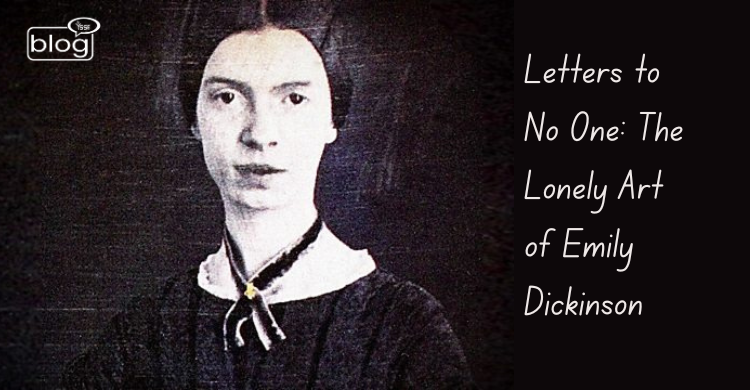Have you ever felt that no one understands you? Have you ever felt that you need to express your emotions in writing, even if no one would ever read it?
One of the greatest writers of English literature, Emily Dickinson, was fully aware of that emotion. She transformed her loneliness into heartfelt letters and poetry that still connect with us now.
Emily Dickinson was born in the Massachusetts town of Amherst in 1830. As she grew older, she decided to spend most of her time at home, despite being an intelligent and curious girl. Emily barely left her home by the time she was in her late twenties. Her town referred to her as the “Myth of Amherst” due to her extreme privacy and aura.
Though Emily stayed away from her people, she always loved to think deeply about life. She wrote almost 1,800 poems about love, nature, death, and feelings. But during her lifetime, only a few of her poems were published. Most of her work stayed hidden in her room, where she carefully tied her poems into little booklets.
Emily was a letter writer as well. She wrote many letters addressing her family and friends. Even if she didn’t mail the letters, writing was how she expressed her feelings and views. When she felt isolated, these “letters to no one” served as a form of self-talk and a means of connection.
Her loneliness was not only depressing, but it also inspired her to be more creative. Emily was able to think and write because she was alone most of the time. Among her best-known poems is “I’m Nobody! “Who are you?” reveals her feelings about her uniqueness. She transformed her feelings of being “nobody” into something unique that continues to connect with a lot of people today.
One of the most unique things about her writing is she didn’t use titles for her poems so the first lines of her poem are considered as the title. Her use of punctuation was also very captivating. She often used capital letters, and commas in the middle of the lines to put emphasis on that particular word.
Emily did have some connections with the outside world. She wrote letters to a man named Thomas Wentworth Higginson, a writer and critic, asking for advice about her poems. But even with these few connections, Emily stayed true to herself. She didn’t try to fit into what society expected of her. Instead, she used her quiet life to create words that would last forever.
Today, Emily Dickinson’s poems and letters are admired all over the world. She showed us that being alone doesn’t mean you can’t create something awstrucking. Her “letters to no one” remind us that writing is powerful, even if it’s just for ourselves. Sometimes, putting our thoughts into words is enough to make us feel less alone.
So, if you ever feel lonely, remember about Emily Dickinson. Try writing your own thoughts down, just like she did. You might discover that your words have a special magic, too. After all, some of the best connections we make are the ones with ourselves.
To read these types of blogs, click here.
Writer,
Tandra Saha Tanu
Intern, Content Writing Department
YSSE

